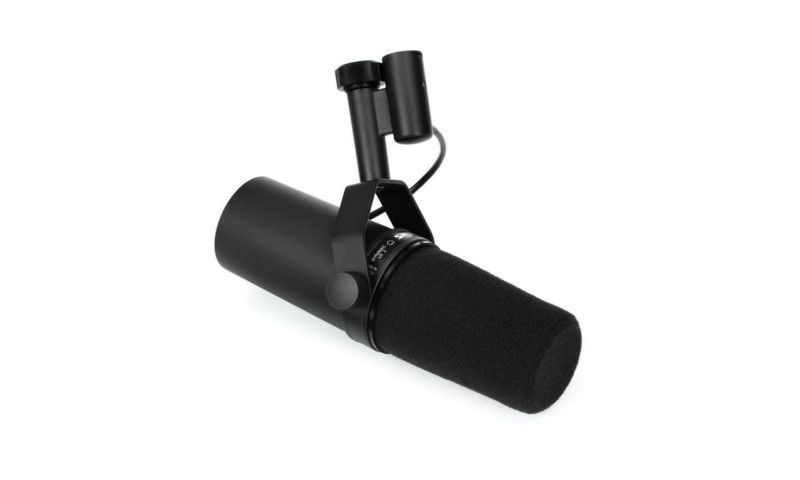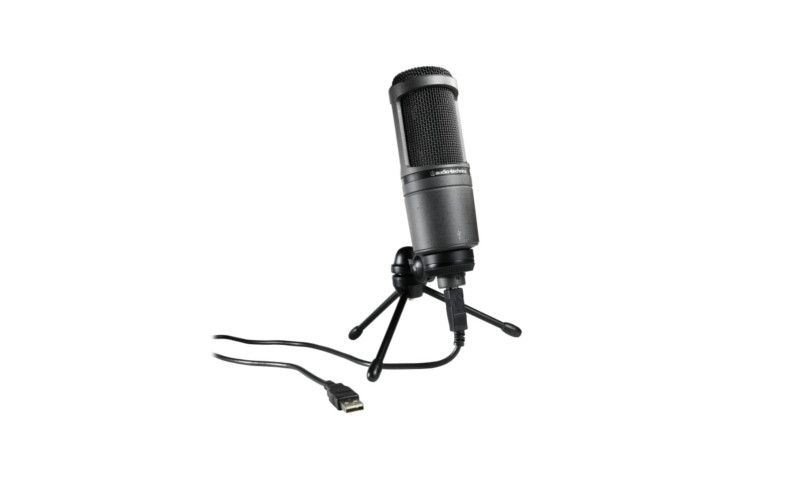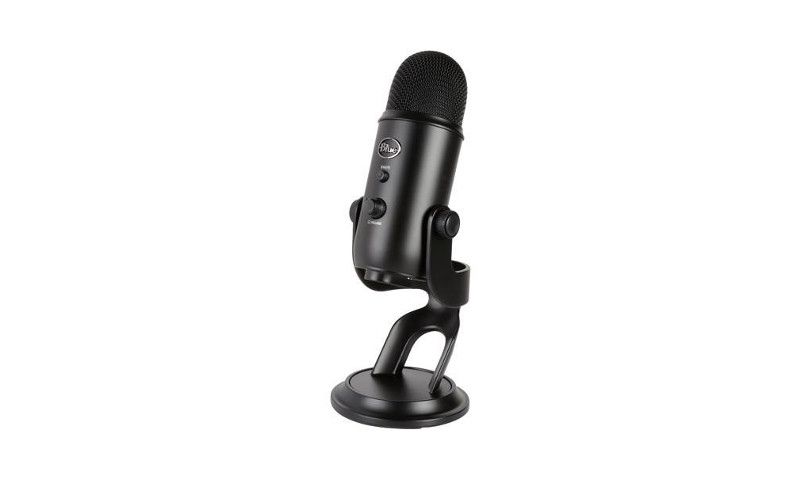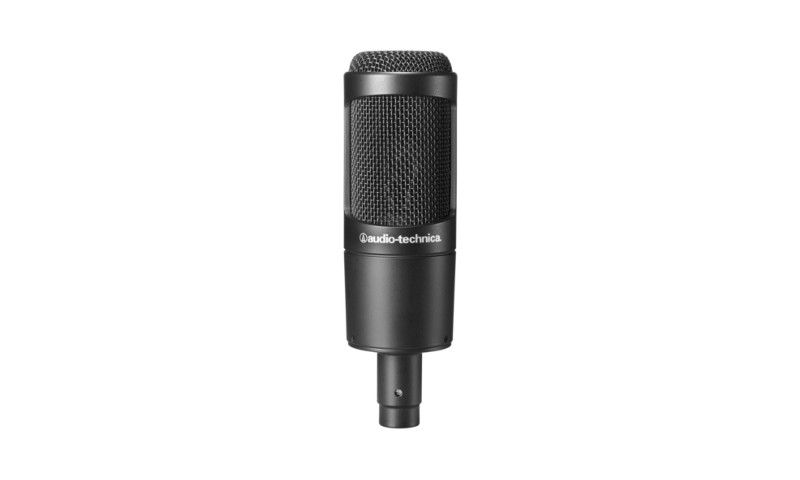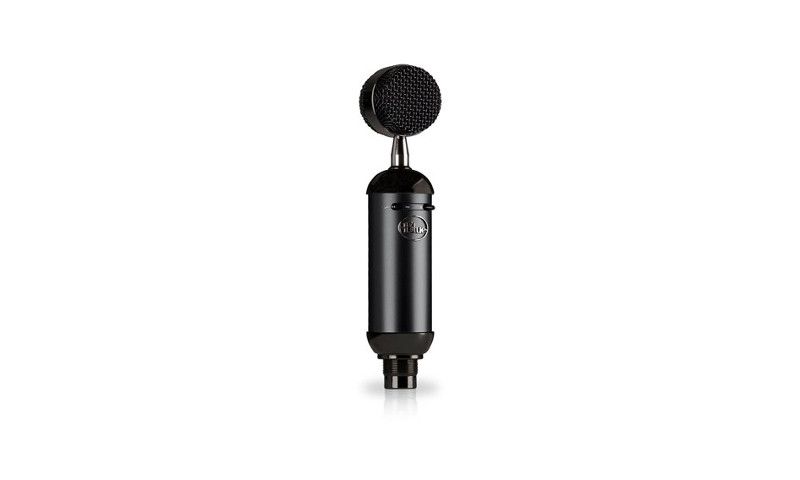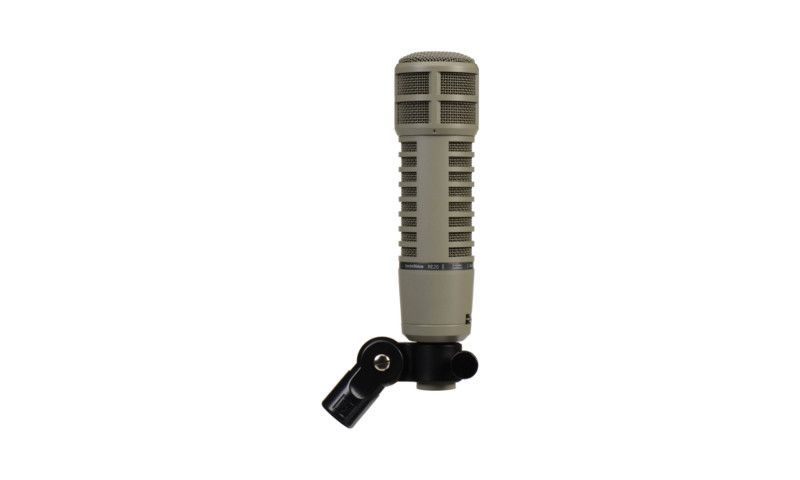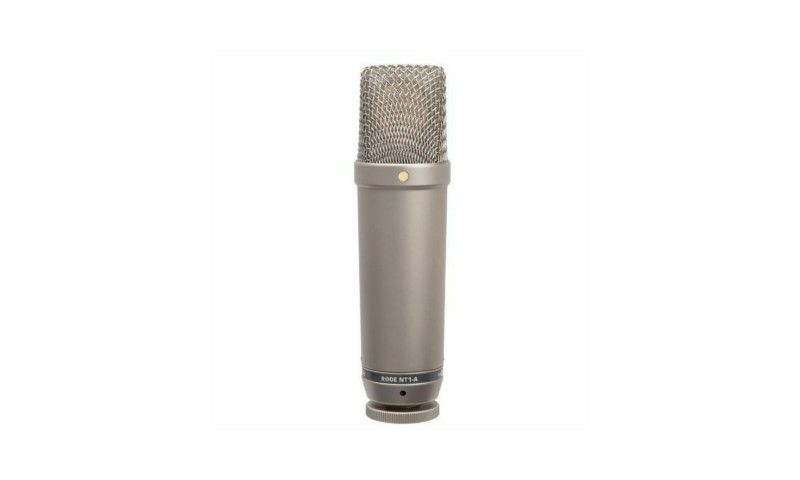Audio quality is obviously a crucial factor when streaming, as regardless of whether you’re choosing to stream with or without a facecam, people are still going to want to hear you. However, whether you will actually want or need to include a microphone as one of your early investments, isn’t necessarily as clear as you might think. Below, we will be looking at the most popular microphones for streaming in 2021, as well as the advantages and disadvantages to each type. This includes comparing headset mics to standalone microphones, as well as an overview of some of the most common stand-alone microphones that are used by streamers.
Table of Contents
- Popular Microphones
- Microphones for Streaming
- Types of Microphones
- Types of Microphone Connections
- Directional Sensitivities
Shure SM7B
The Shure SM7B is probably the most popular microphone for streaming on this list, although the AT2020 is a close second, used by the likes of ChocoTaco, KayPeaLoL and CouRageJD to name a few. It is a unidirectional cardioid dynamic microphone with a full-metal chassis with an external foam windscreen that is designed to reduce interference by both electrical and mechanical noise sources, as well as broadband disruptions.
The pop-filter further helps to lessen the effect of hard breath sounds caused by popping vocalizations, or close-up speech. All of these features are meant to reproduce the original sounds as realistically as possible once they are converted to the recording device.
It does not come with a stand, but does feature yoke mounting capabilities, as well as a captive nut stand in order to allow for the device to be easily mounted onto a stand or boom arm. It also requires an XLR cable and pre-amp. Unless you’re planning on recording music or have an established streaming community, it’s probably best to purchase a cheaper mic.
Specs:
- Impedance: 150 ohms
- Frequency Response: 50 – 20,000 Hz
- Phantom Power ~48 volts
- Signal-to-Noise Ratio: 33 dB : 1 kHz at 1 Pa
- Sensitivity: -59 dB
- Connector: XLR
- Switches: A presence boost and high-press filter
- Price: ~$400 USD
Pros:
- Very low sensitivity
- Comes with external pop-filter
Cons:
- Expensive
- Requires mic stand, XLR cable, & mixer
Audio-Technica AT2020+/USB
This is an entry-level streaming microphone that is available in either a USB or XLR variation, so you will need to be careful to ensure that you have chosen the right type before purchasing one. Both are unidirectional cardioid condenser microphones and also come with a microphone stand adapter, carry case and pivoting stand mount.
Some differences include the fact that while the AT2020+USB comes with a small tripod desk stand as well as the necessary USB connector, the regular AT2020 comes with neither a stand nor an XLR cable. It also requires additional hardware in the form of a pre-amp, which will allow for more options for tweaking the audio output before it is inputted to the recording device.
Furthermore, it also features a better audio transducer produces a clearer audio output as a result. This is despite the fact that the AT2020USB has a built-in audio interface. There are some cheap per-amps out there, if you don’t mind paying extra for it, but as always, it would be a good idea to check out some comparison videos before buying one.
If you want to listen to the Audio Technica AT2020+USB in action, streamers Yassuo, Cizzorz and Fedmyster all use this model.
Specs:
- Impedance: 100 ohms
- Frequency Response: 20 – 20,000 Hz
- Phantom Power (XLR): ~48 volts
- Power (USB): 5V DC
- Signal-to-Noise Ratio: 74 dB : 1 kHz at 1 Pa
- Connector: XLR/USB
- Switch: Audio interface (USB only)
- Price: ~$169.00
Pros:
- Relatively cheap
- USB version has tripod stand & audio interface
Cons:
- Requires a pre-amp
Blue Yeti USB
The Blue Yeti is another popular microphone among streamers. AnthonyZ, Ms5oooWatts and Kragiee all use this as part of their streaming setup.
The Blue Yeti is attached to its own desk stand and needs to be kept upright, rather than placed at an angle. As well as a multipattern selection allowing for four directional modes, namely cardioid, stereo, bi- and omnidirectional, thereby making it a pretty affordable multipurpose microphone for those who are just starting out and don’t want to invest in an XLR device just yet.
Specs:
- Impedance: 16 ohms
- Frequency Response: 20 – 20,000 Hz
- Power: 5V 150 mA
- Signal-to-Noise Ratio: 120 dB : 1 kHz at 1 Pa
- Connector: USB
- Switches: Directional switch; sensitivity control; mute button; & headphone volume control knob
- Price: ~$109 – $150 USD, depending on color
Pros:
- Cheapest on this list
- Comes with a stand
- Four directional modiles
- Can adjust sensitivity
Cons:
- Needs to be kept upright
Audio-Technica AT2035
The AT2035 is an XLR cardioid condenser unidirectional microphone that has a large diaphragm and is capable of handling high pressure sound waves. As with the AT2020s, it too has a full metal body to increase its durability. As it requires phantom power to work, you will also need to purchase an interface device.
While many of the specs are similar, it is slightly bigger than the At2020 and also features a built-in -10 decibel pad and bass roll-off switch, both of which will assist with recording louder sounds such as instruments as well as eliminating background noise. In this regard, as well as overall clarity, the At2035 seems to be better than the AT2020, especially when it comes to recording instruments, but this is view is subjective.
Extra accessories include a travel bag, microphone stand adapter and plastic shock mount.
Streamers Electra, Sequisha and Thiefs all use the Audio-Technica AT2035.
Specs:
- Impedance: 200 ohms
- Frequency Response: 10 – 20,000 Hz
- Phantom Power: 11 – 52V volts (optimal 48V)
- Signal-to-Noise Ratio: 82 dB : 1 kHz at 1 Pa
- Connector: XLR
- Switches: -10 dB pad and bass roll-off switch
- Price: ~$150 USD
Pros:
- Relatively cheap
- XLR cables are durable and long
- Durable frame
Cons:
- Requires mixer to operate
Blue Blackout Spark SL
The Blue Blackout Spark SL is a cardioid unidirectional condenser microphone with a 100Hz low cut filter that helps to block out unwanted background noise. The -20dB switch further helps to prevent distortions in the recordings in order to enable clarity with vocal recordings and podcasts. It’s not really intended for instrumental recordings.
In addition to requiring an intermediary device and XLR cable, you will also need to buy a boom arm or mic stand. It does however, come with a shock mount and wooden storage box with a sliding opening.
To get a sense of the sound quality we recommend tuning into Snowlit, Orb and NoisyButters who all use this microphone for streaming.
Specs:
- Impedance: 50 ohms
- Frequency Response: 20 – 20,000 Hz
- Phantom Power: 48V
- Signal-to-Noise Ratio: 73 dB : 1 kHz at 1 Pa
- Connector: XLR
- Switches: -20dB pad, and low frequency 100Hz high-pass filter
- Price: ~$170 USD
Pros:
- Relatively cheap
- Can adjust the sensitivity by -20dB
Cons:
- Requires mic, stand, XLR cable & mixer
Electro Voice RE20
The Electro Voice RE20 is a unidirectional dynamic cardioid XLR microphone that has a built-in pop filter and internal element shock mount and windscreen to reduce interference from external sound sources. Streamers who use the Electro Voice RE20 include PandaTV, Calebhart42 and Comikazie.
As it is dynamic, it does not require phantom power to operate, but it will still need a mixer or pre-amp in order for the audio to be recognized on the recording device. It is effective in blocking out ambient noises that was originally designed for voice-over and conversational broadcasting.
Although this is an excellent microphone for streaming, its probably better to stick with a cheaper microphone that will do the job you need it to. This is because it is designed for professional studio-quality recordings, just as the Shure SM7B, meaning that the high quality and capabilities are far beyond what is necessary for a small stream.
It also depends on whether you are considering instrumentals, podcasts or similarly highly vocal dependent streams. As with the other microphones on this list, comparative video research would be the best choice before making a final purchase, especially if you are only just starting out.
Extra accessories include a padded zip-up carry case, as well as a screw adapter for a standard microphone stand. However, it includes neither a stand nor an XLR cable.
Specs:
- Impedance: 150 ohms
- Frequency Response: 45 – 18,000 Hz
- Power: Dynamic
- Signal-to-Noise Ratio: 130dBm : 1.5 kHz at 1 Pa
- Sensitivity: -56.5dB
- Connector: XLR
- Switches: Bass roll-off switch
- Price: ~$450 USD
Pros:
- Built-in pop-filter
- Internal element shock-mount
- Very low sensitivity
- Good for recording vocalizations & instruments
Cons:
- Most expensive on this list
- Requires mic stand, XLR cable & mixer
Rode NT1-A
The Rode NT1-A microphone has a unidirectional cardioid polar pattern that requires vocalization from the side, rather than at an angle. This mic is designed to record both vocalistions and instruments, with directions on how to achieve optimal sound quality for different instruments included in the pamphlet and instructional DVD.
Additional accessories include a pop-shield, shock mount, XLR cable, carry-case, moisture-absorbent crystals and a microphone dust cover.
Streamers Miss_Rage, Deadlyslob and Mang0 all use the Rode NT1-A.
Specs:
- Impedance: 100 ohms
- Frequency Response: 20 – 20,000 Hz
- Power: Phantom 24V or 48V
- Signal-to-Noise Ratio: 137dBm : 1kHz at 1 Pa
- Sensitivity: -31.9dB
- Connector: XLR
- Switches: Boost/flat switch
- Price: ~$230 USD
Pros:
- Comes with XLR cable
- Comes with pop-filter
- Low sensitivity
- Good for recording vocalizations & instruements
Cons:
- Requires mixer and stand
Microphones for Streaming Tips
Audio quality is obviously a crucial factor when streaming, as regardless of whether you’re choosing to stream with or without a facecam, people are still going to want to hear you. As far as quality goes, many experts will say that it’s best to not spend too much on your initial investment on a microphone for live streaming until you see whether you actually enjoy streaming and whether you attract enough viewers to justify the expenses.
That’s why many streamers who are starting out initially stick to using their headset mics, although there are some pros who use them as well. Those with a good reputation include the Astros A40s. Of course, they don’t compare to a dedicated microphone, so you’ll probably want to upgrade your setup once you’ve decided to take streaming more seriously.
Most broadcasters will recommend a USB microphone for streaming, as they usually come with their own inbuilt processing drivers and hardware, including a pre-amp and analogue to digital converter. They also usually don’t require additional sound cards. This is important, as while all motherboards are built with pre-amps and audio-convertors built into them, but they are usually not of the highest quality, which is why many streamers will buy a higher quality pre-amp and/or mixer to improve to sound quality.
It is worth noting, that all equipment should be of the same quality, as all of the equipment will peak at that of the lowest quality product in the audio chain. It’s therefore significant when microphones have the major elements integrated into a single interface.
Types of Microphones
1. Dynamic/Moving Coil Microphones
These microphones tend to be quite robust, meaning that they can usually withstand impacts from falls. They also have the capacity to process high levels of sound pressure (meaning the pressure caused by sound as it travels through the air), which is useful for recording loud musical instruments or similarly loud sounds.
However, this is often offset by their inability to accurately detect softer or nuanced sounds, as they can only create energy signals based on the amount of pressure that is registered inside the microphone. This impacts the way in which the sound is captured, often resulting in the product sounding slightly different to how it did in real life.
The electrical signal produced by the microphone is also very weak, thereby requiring a preamp to increase the volume and sound quality. They therefore usually require external preamps such as the Focusrite Scarlett 2i2. Some mixers also have preamp capabilities built in.
Advantages:
- High durability
- Can process higher pressure sound waves
- Less likely to pick up background noise
- Good for studio recordings
- Easy to transport
Disadvantages
- Usually requires additional external hardware.
- Poorer quality for softer and nuanced sounds.
2. Condenser/Capacitor Microphones
Condenser microphones are able to capture and amplify subtle audio levels and therefore create a balanced and clearer output that is more suitable for recording speech. However, they are also less durable and more expensive than dynamic microphones, so it would be wise not to attempt mic-drops with any of these.
They don’t automatically produce a sound, as they create a sound with electrical mechanisms that require phantom power to work. They also require pre-amps in order to be recognized by the recording device, but many of them already have built-in preamps. some of these devices. External preamps do improve the overall audio quality, but if you are just starting out as a streamer, it’s probably not that worthwhile an investment early on.
There are two types of condenser microphones:
- Standard/Externally Polarized – these require charges from external power sources
- Electret – have a permanent charge via internal capacitors that vibrate when sound is projected onto them. These vibrations are then converted into electrical sound by means of a pre-amp that is usually built into the microphone.
Advantages
- High sensitivity can pick up softer sounds and nuances
- Many come with a switch to decrease the sensitivity to enable louder sounds to be recorded
Disadvantages
- Usually require external soundproofing in the recording room
3. Ribbon Microphones
Ribbon microphones function similarly to dynamic microphones. However, they are more fragile than the abovementioned microphone types, both physically and in relation to the types of power that they can process. For instance, phantom power will destroy most types of ribbon microphones.
Aside from that, ribbon microphones are fairly similar to dynamic microphones, with the main difference being that they are built around a thin metal ribbon, whereas dynamic microphones are designed around a plastic diaphragm.
Advantages
- Can process higher pressure sound waves than condenser microphones
Disadvantages
- Cannot handle physical impacts
- Are sensitive to certain power input types, especially phantom power
- Can distort softer and nuanced sounds
Types of Microphone Connections
TS/TRS/TRRS plugs, XLR, and USB connectors are the three methods of connecting microphones to audio recorders, with XLR and USB being the most common types used for streaming. Aside from their shapes, another basic difference between them is that while USB and plugs can connect directly with the PC, XLR connectors require an intermediary device such as a mixer or audio interface. But the audio quality is generally superior to USB devices.
However, XLR cables are much longer and more robust than the other cable types, making them useful for studio productions. XLR-based microphones are usually also more expensive than the other types, due to their flexibility and durability.
TS/TRS/TRRS are typically found in microphones that are designed to be connected to mobile devices such as smartphones, tablets and cameras. These connectors also need to be placed closer to the recording device than other the connectors do, because they are more susceptible to picking up interference from other electrical devices. Their cables should therefore be set up so that they do not touch or cross over any other electrical cables.
USB microphones are much less sensitive to interference, and are just as easy to set up, as both types simply need to be connected straight into the device. However, it is more complicated to set up multiple recording devices at once, as either the computer, microphone or both may lack the versatility to cope with multiple devices operating at the same time. They are also prone to capturing unwanted background noise.
This is where both XLR cables and TS/TRS/TRRS plugs have an advantage, as there are intermediary devices such as mixers that facilitate the operation of multiple units at once. These include the GoXLR or the Behringer Xenyx 1204USB can indirectly connect multiple devices to the PC, while simultaneously controlling the audio volumes and levels of each device as well as render the inputs manageable for the recording device.
Power Voltages
- Phantom power (XLR) – 48 volts.
- Plugin power (TS/TRS/TRRS) – 3 – 5 volts
- Internal power – battery-operated.
It is advisable not to use adapters to try to connect different power connector slots, because the electrical signals are mismatched and will interfere with each other. This will negatively affect the audio quality and it can even destroy the equipment. It’s advisable to do research to fully understand the problems, and before attempting any home-made solutions, to the problems, such as replacing the pins on the cables. Furthermore, when purchasing a pre-amp, be careful to ensure that it provides exactly the right voltage requirements for your device so as to produce optimal audio outputs.
Directional Sensitivities
There are two main direction types that microphones can have. One is omnidirectional, meaning that it can pick up sounds equally from all directions. The next are cardioid/directional microphones, that pick up sounds that are closer to the direction that they are facing and are less sensitive to sounds that are coming from behind them. This type has many sub-categories, with some having great and smaller scopes than others.
Another consideration would be to acquire a pop-filter, if the microphone doesn’t already come with one, as this will help to decreasing popping vocalizations. These include the sounds that sometimes occur when broadcasters say certain sounds, such the letter ‘p’ or ‘t,’ or when the broadcaster is breathing close to the microphone’s capsule. It’s best to buy one that accommodates the shape of the microphone capsule, so you should take the microphone’s dimension’s into account beforehand. This might entail researching in forums, or perhaps taking the microphone to a brick-and-mortar store.


